publications
2025
-
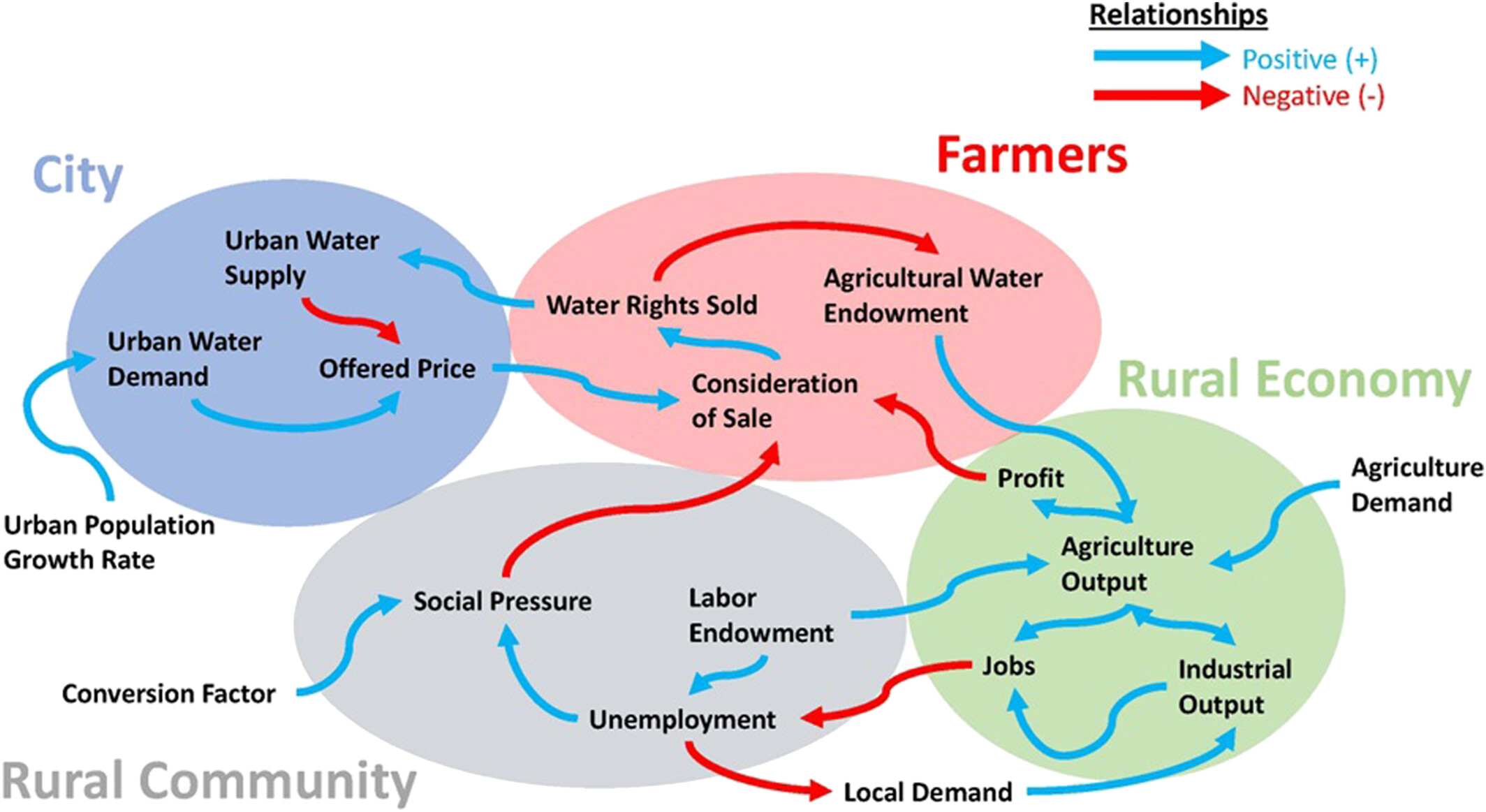 Understanding Rural-to-Urban Water Transfers: An Agent-Based and Input-Output Modeling ApproachMaria Amaya, Chung-Yi Lin, and Landon T. MarstonEarth’s Future, Jul 2025
Understanding Rural-to-Urban Water Transfers: An Agent-Based and Input-Output Modeling ApproachMaria Amaya, Chung-Yi Lin, and Landon T. MarstonEarth’s Future, Jul 2025Growing societal water demands and decreasing water supplies are straining the water available for communities in many basins. Once water supplies have been fully allocated and developing new water supplies is infeasible, the best option to meet growing water demands is often to reallocate water from rural agricultural water uses. Yet, the dynamics and implications of these rural-to-urban water transfers are poorly understood. Here, we integrate an agent-based model with an input-output model to capture the behavior of individual irrigators and examine how their water transfer decisions propagate through the broader rural economy and shape social dynamics. As a demonstration of our model, the rural community represents Alamosa County while the city represents the city of Denver, both located in Colorado, Unites States. We find that the greatest long-term decline in crop water use corresponds with higher city growth rates while the greatest short-term decline corresponds with larger farmer discount rates. As farmers sell their water rights to the City, economic activity from the crop production sector declines, causing unemployment in the crop production sector to increase and demand from the service sectors to decrease, which results in output declining in these economic sectors as well. Thus, a negative impact on the agricultural sector will cause some negative impact on other economic sectors, such as professional, health care, and recreational services. This research brings new insights that can be used to evaluate the socio-economic impacts of water transfers and shape policy to minimize potential negative externalities associated with water transfers.
2024
-
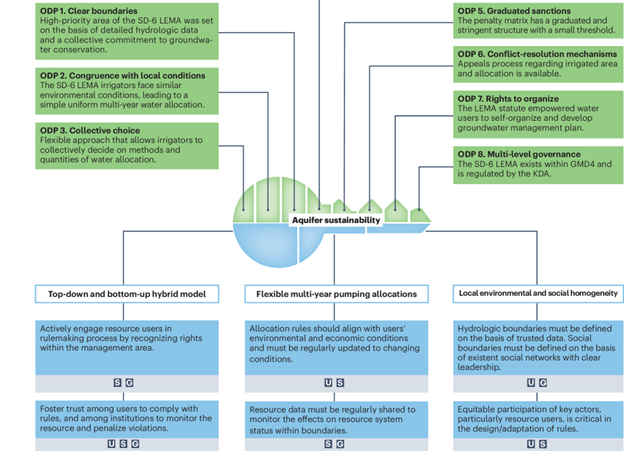 Unlocking aquifer sustainability through irrigator-driven groundwater conservationMaria Elena Orduña Alegría, Sam Zipper, Hoon C. Shin, and 16 more authorsNature Sustainability, Oct 2024
Unlocking aquifer sustainability through irrigator-driven groundwater conservationMaria Elena Orduña Alegría, Sam Zipper, Hoon C. Shin, and 16 more authorsNature Sustainability, Oct 2024Aquifer depletion due to intensive irrigation threatens global economies, food security and ecosystems. This Perspective examines the hydrological, social and economic complexities of managing groundwater resources, focusing on the Sheridan 6 Local Enhanced Management Area in the US High Plains aquifer. Here irrigator-led conservation efforts reduced groundwater use by 25% and slowed aquifer depletion by 65% while maintaining farmers’ incomes. This success resulted from a hybrid integration of bottom-up rule development with top-down enforcement, providing flexible multi-year water allocations and aligning management with local conditions. From this, we identify transferable governance tenets for sustainable groundwater management in similar regions.
-
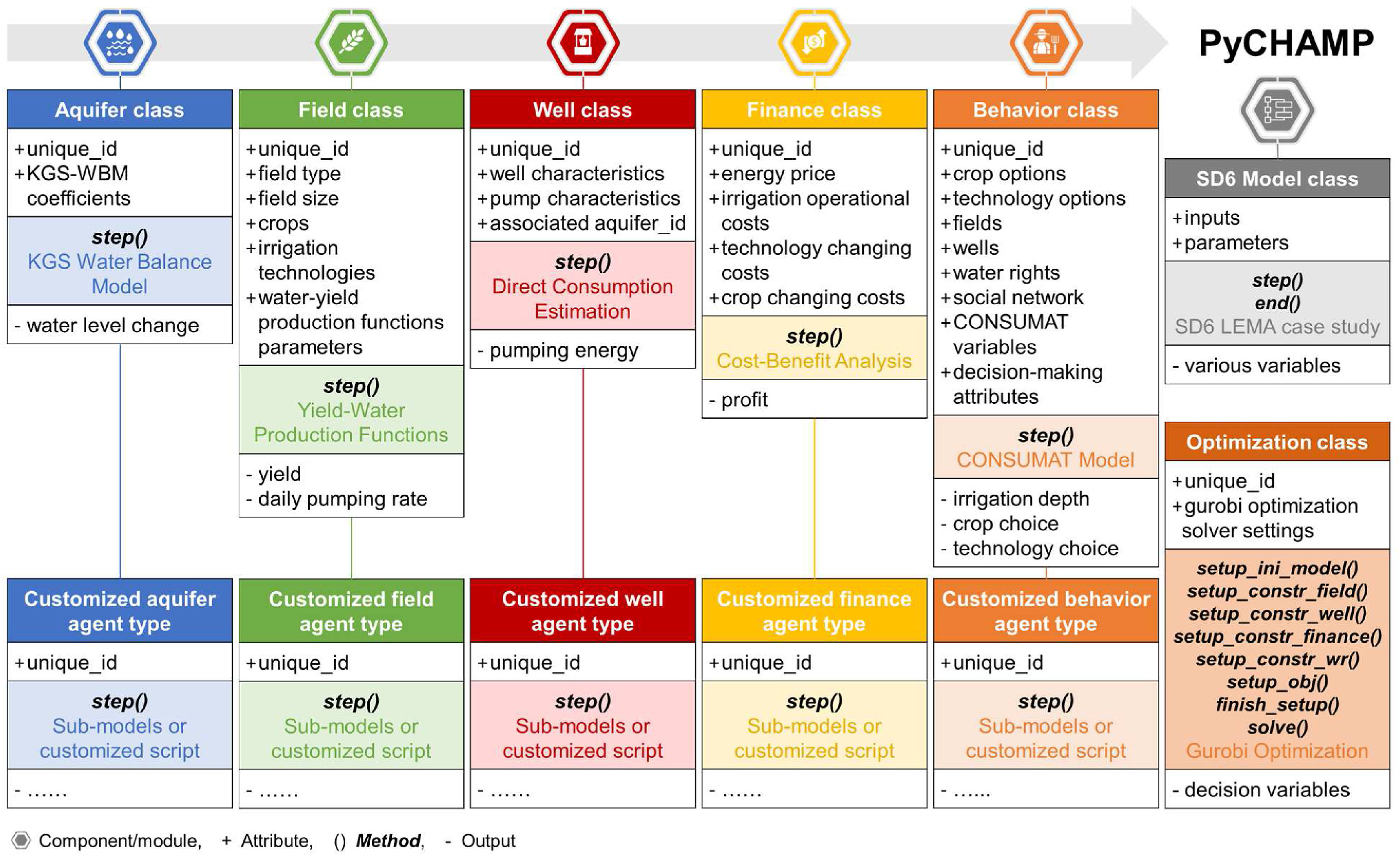 PyCHAMP: A crop-hydrological-agent modeling platform for groundwater managementChung-Yi Lin, Maria Elena Orduna Alegria, Sameer Dhakal, and 2 more authorsEnvironmental Modelling & Software, Oct 2024
PyCHAMP: A crop-hydrological-agent modeling platform for groundwater managementChung-Yi Lin, Maria Elena Orduna Alegria, Sameer Dhakal, and 2 more authorsEnvironmental Modelling & Software, Oct 2024The Crop-Hydrological-Agent Modeling Platform (PyCHAMP) is a Python-based open-source package designed for modeling agro-hydrological systems. The modular design, incorporating aquifer, crop field, groundwater well, finance, and behavior components, enables users to simulate and analyze the interactions between human and natural systems, considering both environmental and socio-economic factors. This study demonstrates PyCHAMP’s capabilities by simulating the dynamics in the Sheridan 6 Local Enhanced Management Area, a groundwater conservation program in the High Plains Aquifer in Kansas. We highlight how a model, empowered by PyCHAMP, accurately captures human-water dynamics, including groundwater level, water withdrawal, and the fraction of cropland dedicated to each crop. We also show how farmer behavior, and its representation, drives system outcomes more strongly than environmental conditions. The results indicate PyCHAMP’s potential as a useful tool for human-water research and sustainable groundwater management, offering prospects for future integration with detailed sub-models and systematic evaluation of model structural uncertainty.
-
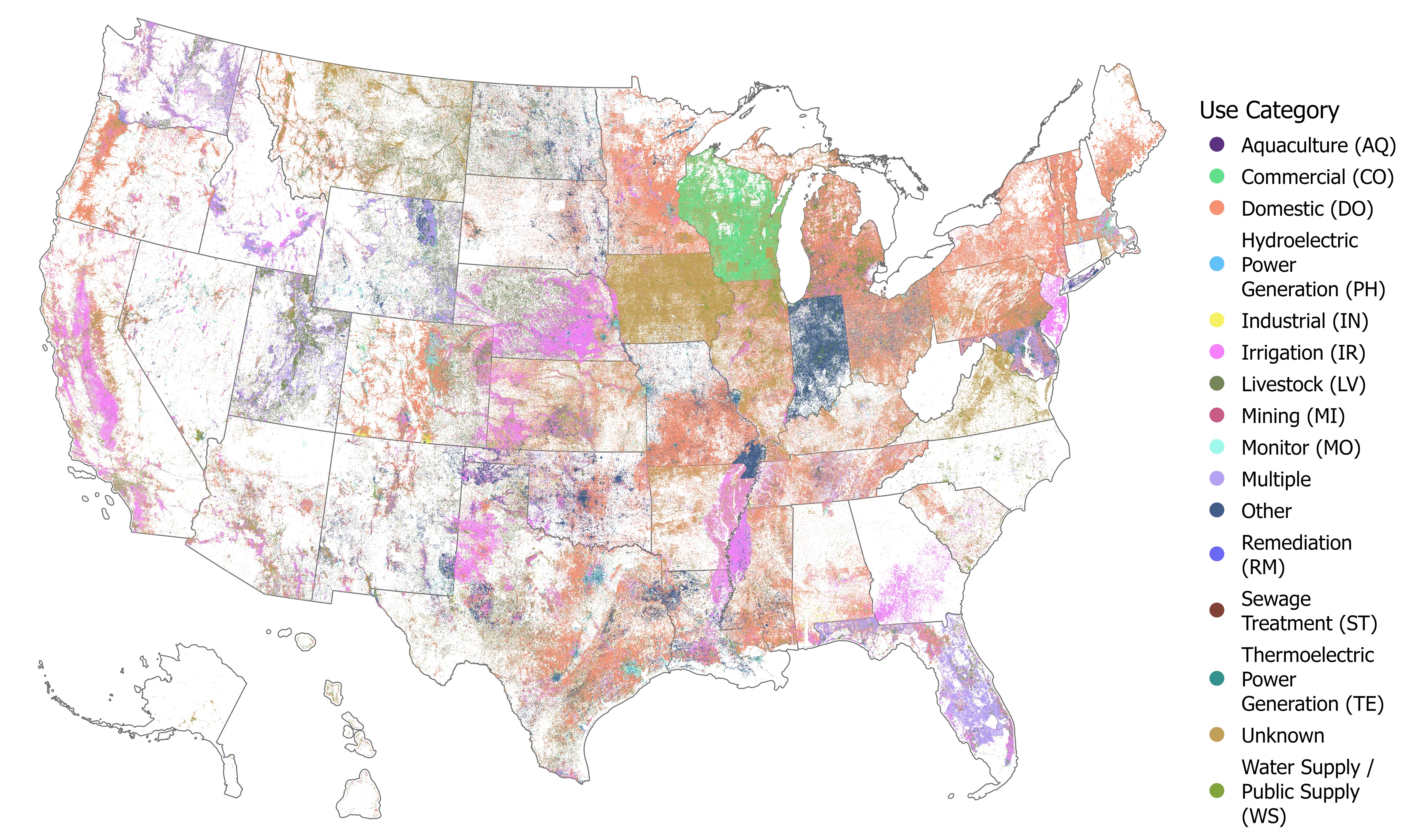 A database of groundwater wells in the United StatesChung-Yi Lin, Alexandra Miller, Musab Waqar, and 1 more authorScientific Data, Apr 2024
A database of groundwater wells in the United StatesChung-Yi Lin, Alexandra Miller, Musab Waqar, and 1 more authorScientific Data, Apr 2024Groundwater wells are critical infrastructure that enable the monitoring, extraction, and use of groundwater, which has important implications for the environment, water security, and economic development. Despite the importance of wells, a unified database collecting and standardizing information on the characteristics and locations of these wells across the United States has been lacking. To bridge this gap, we have created a comprehensive database of groundwater well records collected from state and federal agencies, which we call the United States Groundwater Well Database (USGWD). Presented in both tabular form and as vector points, USGWD comprises over 14.2 million well records with attributes, such as well purpose, location, depth, and capacity, for wells constructed as far back as 1763 to 2023. Rigorous cross-verification steps have been applied to ensure the accuracy of the data. The USGWD stands as a valuable tool for improving our understanding of how groundwater is accessed and managed across various regions and sectors within the United States.
-
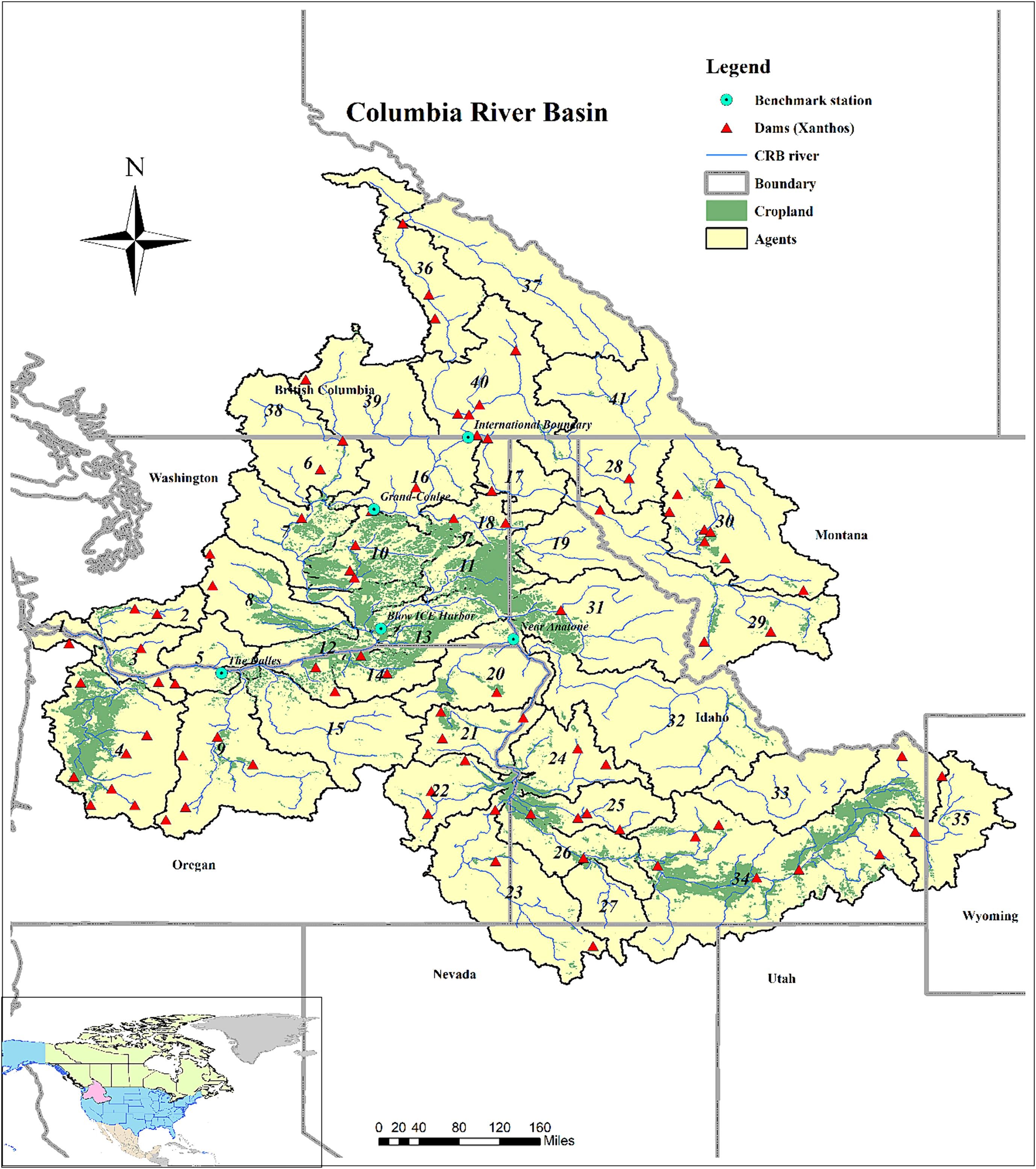 Exploring the food-energy-water nexus in coupled natural-human systems under climate change with a fully integrated agent-based modeling frameworkJiaorui Zhang, YC Ethan Yang, Guta W. Abeshu, and 4 more authorsJournal of Hydrology, May 2024
Exploring the food-energy-water nexus in coupled natural-human systems under climate change with a fully integrated agent-based modeling frameworkJiaorui Zhang, YC Ethan Yang, Guta W. Abeshu, and 4 more authorsJournal of Hydrology, May 2024Managing water resources to meet increasing energy and food demands while maintaining environmental sustainability under climate change is a major challenge, especially when this nexus occurred in a coupled natural–human system (CNHS), where heterogeneous human activities affect the natural hydrologic cycle and vice versa. The relevant research has been limited by the lack of models that can effectively integrate human dynamics and hydrologic conditions with spatial details to examine co-evolutionary systems. To address this challenge, this paper develops a modeling framework that integrates an agent-based model (ABM; human behavior model) into a large-scale, process-based distributed hydrologic model to simulate human decisions endogenously in the hydrologic cycle. We then apply the Decision Scaling approach, an ex-post scenario analysis method, with our integrated model to study the bidirectional feedback of the CNHS under future changing climate conditions. With the Columbia River Basin (CRB) selected as the case study area, the calibration results show that the integrated model can simultaneously capture the historical irrigated water consumption and streamflow dynamics. Modeling results show that the trade-off between irrigated water consumption, hydropower generation, and streamflow will become more pronounced under hotter and wetter climate conditions at both the entire basin and regional (states and provinces) levels. Special attention should be given to “temperature thresholds” of different regions when the trade-off pattern started. The trade-off results can potentially inform the Columbia River Treaty renegotiation and provide insights for long-term water management policies.
-
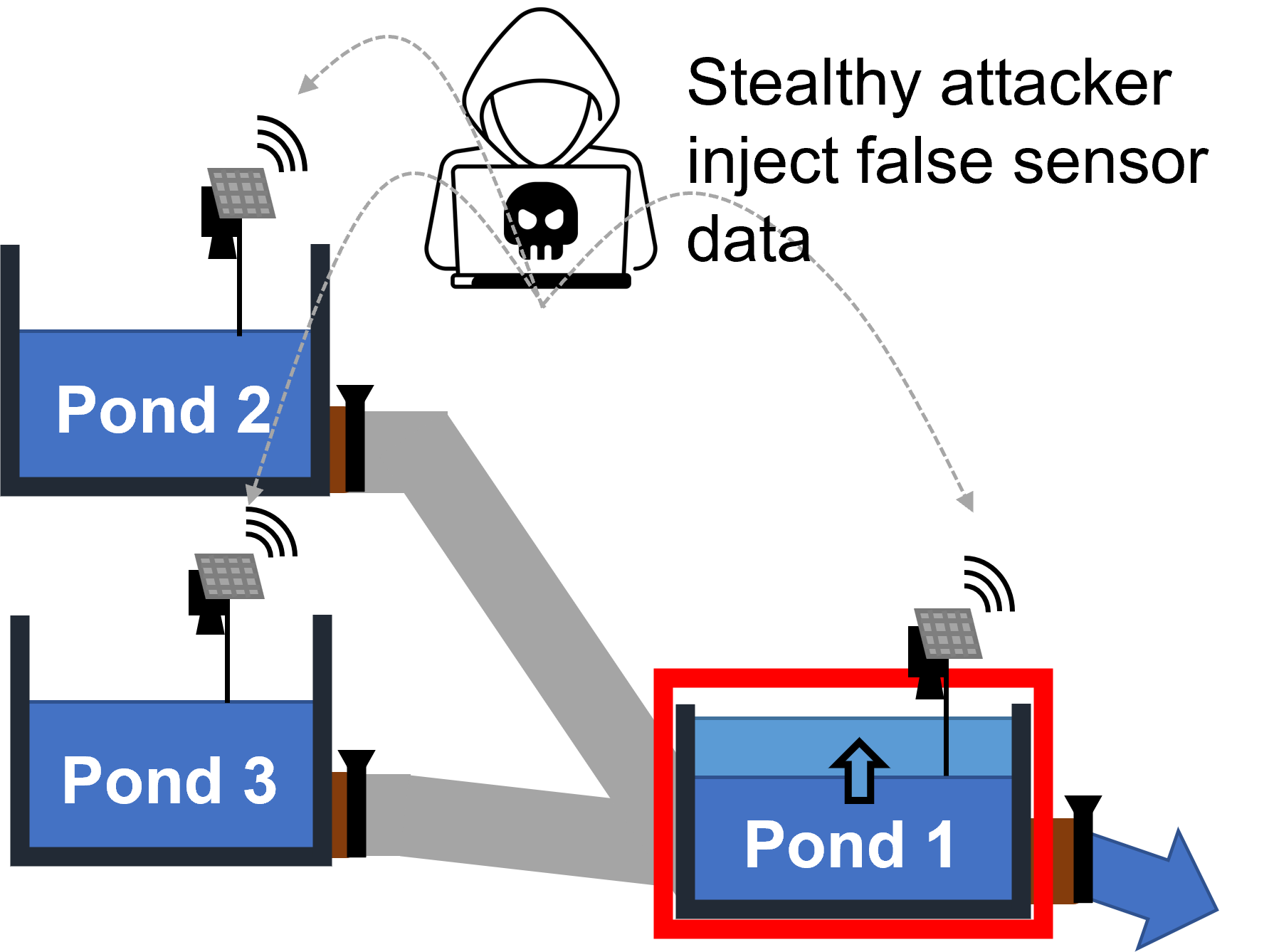 Flood Risks of Cyber‐Physical Attacks in a Smart Storm Water SystemChung‐Yi Lin, Yi‐Chen Ethan Yang, and Faegheh MoazeniWater Resources Research, Jan 2024
Flood Risks of Cyber‐Physical Attacks in a Smart Storm Water SystemChung‐Yi Lin, Yi‐Chen Ethan Yang, and Faegheh MoazeniWater Resources Research, Jan 2024The rise in smart water technologies has introduced new cybersecurity vulnerabilities for water infrastructures. However, the implications of cyber-physical attacks on the systems like urban drainage systems remain underexplored. This research delves into this gap, introducing a method to quantify flood risks in the face of cyber-physical threats. We apply this approach to a smart stormwater system—a real-time controlled network of pond-conduit configurations, fitted with water level detectors and gate regulators. Our focus is on a specific cyber-physical threat: false data injection (FDI). In FDI attacks, adversaries introduce deceptive data that mimics legitimate system noises, evading detection. Our risk assessment incorporates factors like sensor noises and weather prediction uncertainties. Findings reveal that FDIs can amplify flood risks by feeding the control system false data, leading to erroneous outflow directives. Notably, FDI attacks can reshape flood risk dynamics across different storm intensities, accentuating flood risks during less severe but more frequent storms. This study offers valuable insights for strategizing investments in smart stormwater systems, keeping cyber-physical threats in perspective. Furthermore, our risk quantification method can be extended to other water system networks, such as irrigation channels and multi-reservoir systems, aiding in cyber-defense planning.
2023
-
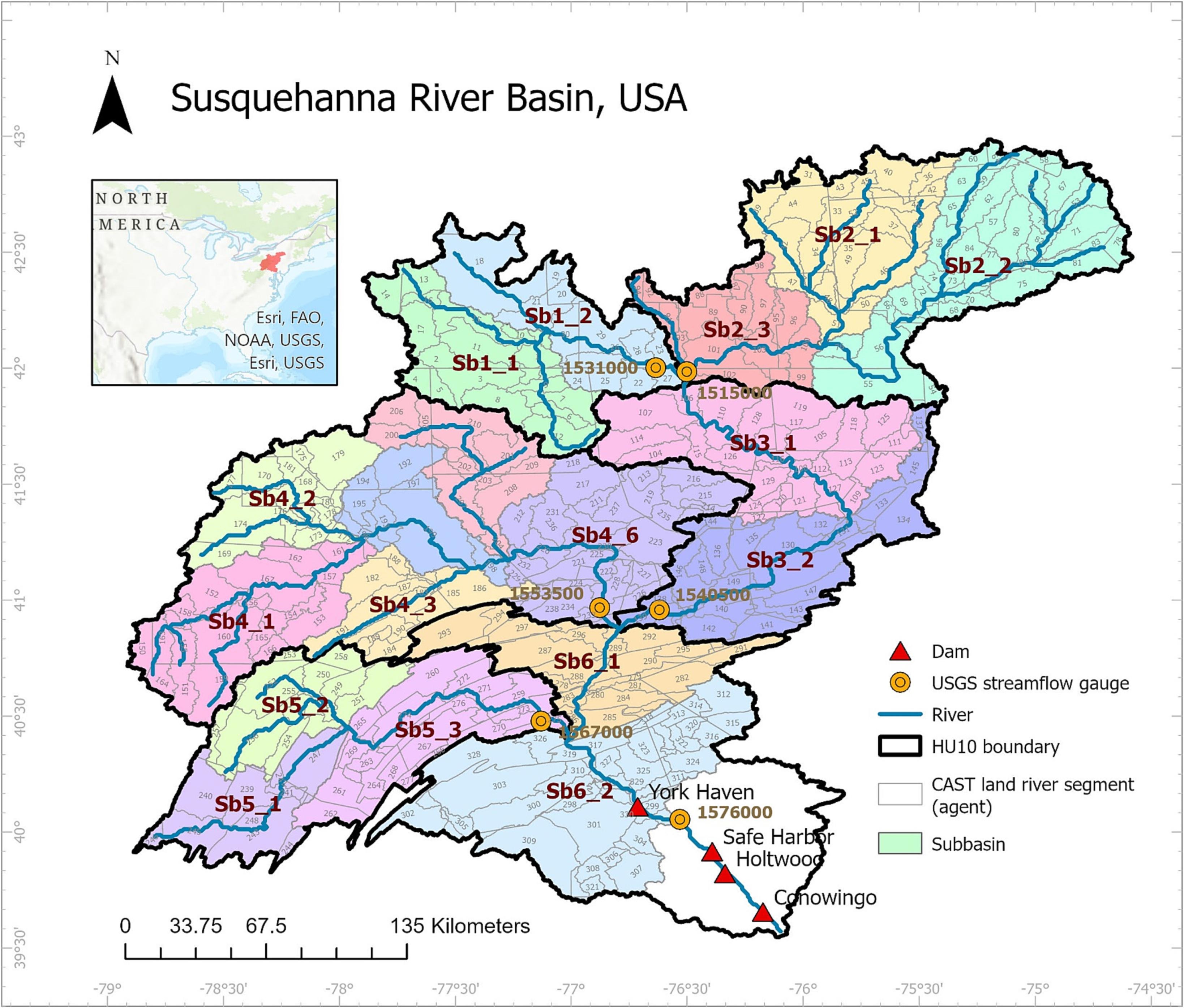 Pay-for-practice or Pay-for-performance? A coupled agent-based evaluation tool for assessing sediment management incentive policiesChung-Yi Lin, YC Ethan Yang, and Anil Kumar ChaudharyJournal of Hydrology, Sep 2023
Pay-for-practice or Pay-for-performance? A coupled agent-based evaluation tool for assessing sediment management incentive policiesChung-Yi Lin, YC Ethan Yang, and Anil Kumar ChaudharyJournal of Hydrology, Sep 2023Cost-shared programs have been applied to incentivize the adoption of agricultural best management practices (BMPs) to address the long-standing water quality issue in the Chesapeake Bay watershed, US. However, the business-as-usual (BAU) incentive program (i.e., pay-for-practice, paying cost share for implementing BMPs) is likely to miss the Total Maximum Daily Load target to reduce 20% of the total suspended sediment (TSS) in 2010 by 2025. Some field experiments indicate that pay-by-performance (PFP; paying lower cost share but with additional bonus payment per unit sediment reduction) can better motivate community involvement leading to greater water quality control outcomes. However, the effectiveness of different incentive policies is still unclear at a basin scale. We propose a coupled agent-based modeling tool to quantify the performance of different incentive policies. The tool considers farmers’ (i.e., agents’) BMP adoption dynamics affected by the social norm and the potential bonus payment. Specifically, we compare individual-based PFP (PFPi) and group-based PFP (PFPg) with BAU. Results of our proposed model applied to the selected study area, the Susquehanna River Basin, Chesapeake Bay’s largest tributary watershed, suggest that PFP can achieve higher TSS reduction with less cost. PFPg shows the best basin-wide TSS reduction associated with the least uncertainty among all tested policies. Also, the performance of PFPg is less impacted by the change in the bonus payment compared to PFPi attributed to farmers’ collaboration efforts. Potentially, the proposed policy evaluation tool can better inform an achievable target with policy suggestions in assistance with social studies (e.g., surveys and behavioral experiments).
-
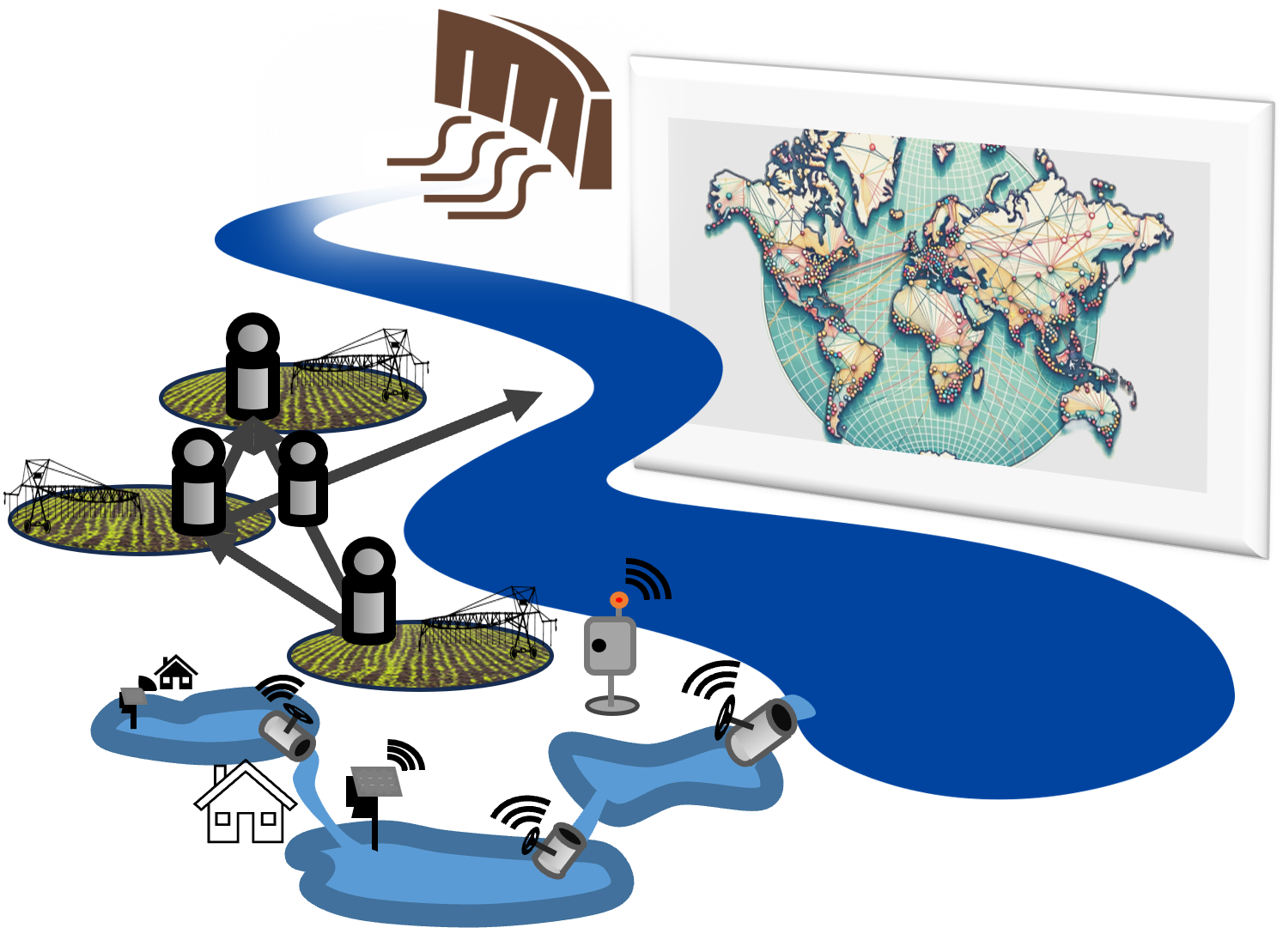 Co-evolution in Complex Adaptive Water Systems from Long-Term Planning to Short-Term ResponsesChung-Yi LinJan 2023
Co-evolution in Complex Adaptive Water Systems from Long-Term Planning to Short-Term ResponsesChung-Yi LinJan 2023Water system planning and management is the science between the natural environment and human society. This dissertation explores the coevolution in complex adaptive water systems from long-term planning to short-term responses to advance our understanding of interactions between natural and human systems using computational modeling approaches. This dissertation investigates the effect of the social norm on farmers’ water diversion behaviors interacting with the hydrological environment through a two-way coupling model. Coupled models bidirectionally bridge the information flow between RiverWare, a commonly adopted water planning model, and an agent-based model (ABM), a human model constructed from a bottom-up modeling logic. ABM can capture the heterogeneity of human actors (farmers) and reveal the emergence of collective patterns. The coupled models are applied to show how the changing water allocation policy impact agents’ characteristics (e.g., risk attitudes). To further explore the coupled models’ characteristics, an open-source Python package, Hydrological model for Coupled Natural-Human Systems, is developed to facilitate the complex adaptive water systems (CAWS) modeling process and conduct an uncertainty analysis. This dissertation analyzes how the model output uncertainty in nature and human systems vary with different ABM complexities concerning uncertainty sources like climate change scenarios uncertainty, internal climate variability, and different model configurations with parameter sets or model structures that are equally capable of producing similar outcomes using the law of total variance. The last research topic shifts the focus from long-term planning to short-term responses. Those responses are viewed as the drivers accumulating to form the trend of long-term changes. This dissertation quantifies the compounding risks of flood caused by storms and cyber-physical attacks in a smart stormwater system, a pond-conduit network that has water level sensors and outflow gate actuators to be remotely controlled by a real-time control system modeled by a linear quadratic Gaussian controller. The numerical experiments illustrate how the maliciously injected data impact the system operation and the pattern of flooding risks in the urban area. The results serve as an initial step to discussing the potential human responses toward compounding risks that might trigger the long-term evolution of CAWS. In sum, this dissertation contributes to advancing the understanding of coevolution in CAWS and encourages future work to develop a holistic framework linking the perspectives of long-term planning and short-term responses in CAWS modeling.
2022
-
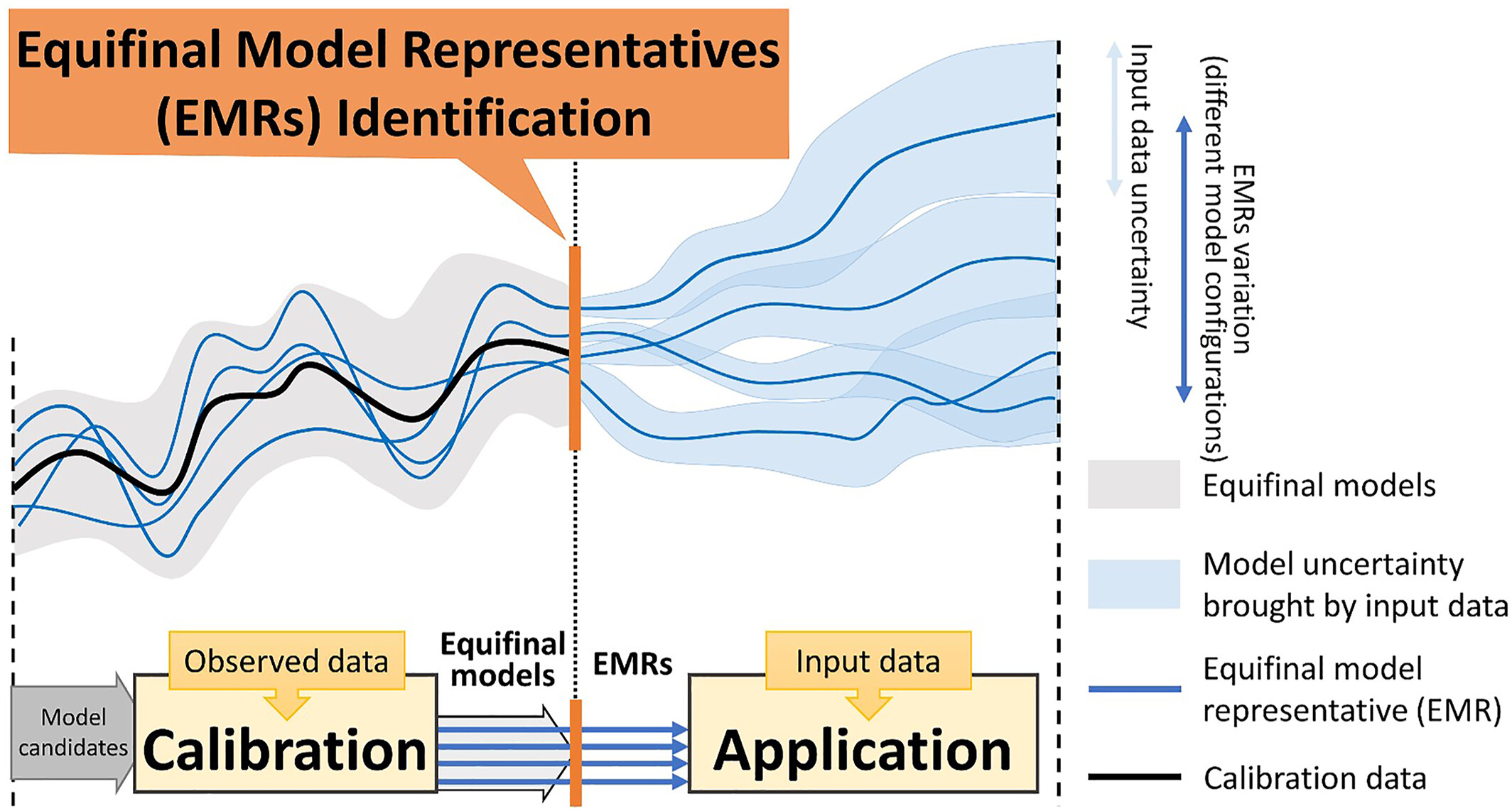 The Effects of Model Complexity on Model Output Uncertainty in Co‐Evolved Coupled Natural‐Human SystemsChung‐Yi Lin, and Yi‐Chen Ethan YangEarth’s Future, Jun 2022
The Effects of Model Complexity on Model Output Uncertainty in Co‐Evolved Coupled Natural‐Human SystemsChung‐Yi Lin, and Yi‐Chen Ethan YangEarth’s Future, Jun 2022Studies have recently focused on using coupled natural-human systems (CNHS) to inform policymaking. However, model uncertainty can increase with model complexity and affect the variance of the model outcomes. Therefore, this study explores an uncertainty analysis of coupled hydrological and human decision models to better evaluate CNHS modeling properties. Five coupled models are proposed with different model complexities for human behavior settings (i.e., model structure and the number of calibrated parameters): one static, two adaptive, and two learning adaptive. Learning adaptive models (the most complex) have both a learning component (capturing long-term trends) and an adaptive component (capturing short-term variations), while adaptive models omit the learning component. The static model is the simplest, without learning or adaptive components. Applying the law of total variance, the model output uncertainty is decomposed into three sources: (a) climate change scenario uncertainty, (b) climate internal variability, and (c) different model configurations with parameter sets or model structures that are equally capable of producing similar outcomes. Our exploratory analysis demonstrated that model uncertainty would likely increase with model complexity given uncertain input data (e.g., climate forcing) and different model configurations; the inclusion of a learning mechanism in the human system can potentially offset the impact of the natural system on uncertainty through coupling natural and human systems. We also discuss other uncertainty sources, such as assumptions about model structure due to incomplete knowledge and metrics for calibration target selection for future studies.
-
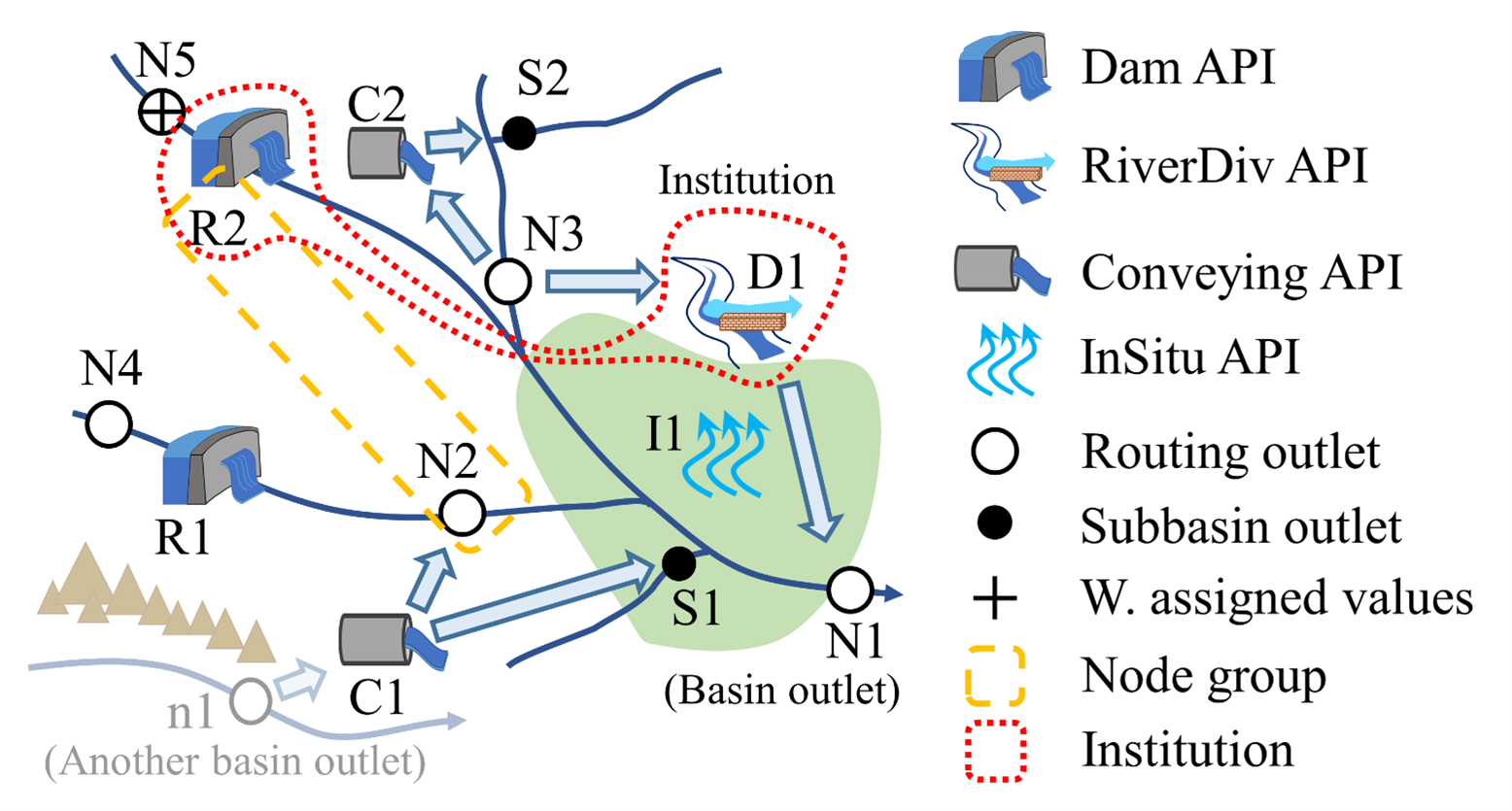 HydroCNHS: A Python Package of Hydrological Model for Coupled Natural–Human SystemsChung-Yi Lin, Yi-Chen Ethan Yang, and Sungwook WiJournal of Water Resources Planning and Management, Dec 2022
HydroCNHS: A Python Package of Hydrological Model for Coupled Natural–Human SystemsChung-Yi Lin, Yi-Chen Ethan Yang, and Sungwook WiJournal of Water Resources Planning and Management, Dec 2022Modeling coupled natural–human systems (CNHS) to inform comprehensive water resources management policies or describe hydrological cycles in the Anthropocene has become popular in recent years. To fulfill this need, we developed a semidistributed hydrological model for coupled natural–human systems, HydroCNHS. HydroCNHS is an open-source Python package supporting four application programming interfaces (APIs) that enable users to integrate their human decision models, which can be programmed with the agent-based modeling concept, into HydroCNHS. Specifically, we designed Dam API, RiverDiv API, Conveying API, and InSitu API to integrate, respectively, customized man-made infrastructures such as reservoirs, off-stream diversions, transbasin aqueducts, and drainage systems that abstract human behaviors (e.g., operator and farmer water use decisions). Each of the HydroCNHS APIs has a unique plug-in structure that respects within-subbasin and inter-subbasin (i.e., river) routing logic for maintaining the water balance. In addition, HydroCNHS uses a single model configuration file to organize input features for the hydrological model and case-specific human systems models. Also, HydroCNHS enables model calibration using parallel computing power. We demonstrate the functionalities of the HydroCNHS package through a case study in the Northwest United States. Given the integrity of the modeling framework, HydroCNHS can benefit water resources planning and management in various aspects, including uncertainty analysis in CNHS modeling and more complex agent design.
-
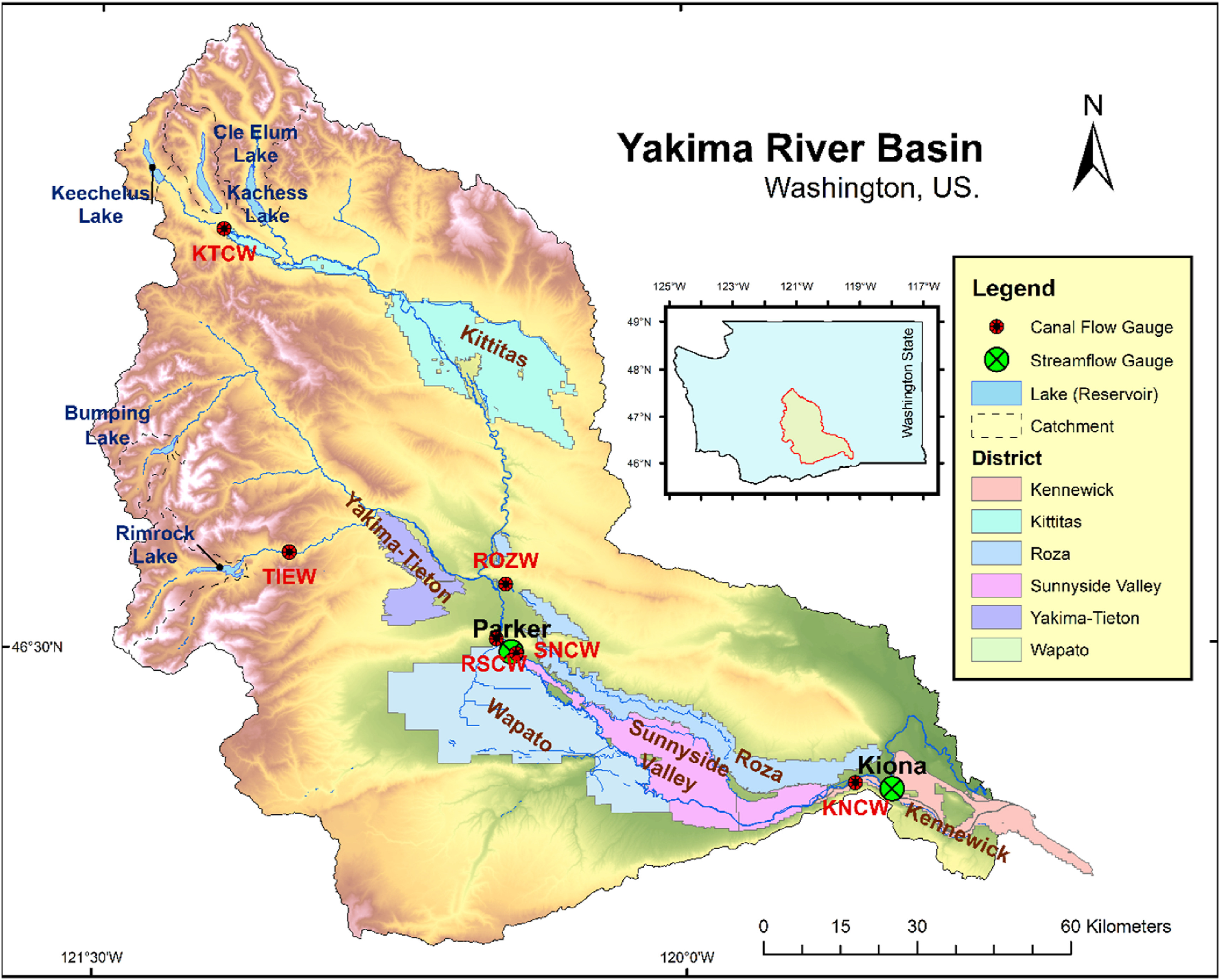 An investigation of coupled natural human systems using a two-way coupled agent-based modeling frameworkChung-Yi Lin, YC Ethan Yang, Keyvan Malek, and 1 more authorEnvironmental Modelling & Software, Sep 2022
An investigation of coupled natural human systems using a two-way coupled agent-based modeling frameworkChung-Yi Lin, YC Ethan Yang, Keyvan Malek, and 1 more authorEnvironmental Modelling & Software, Sep 2022Improving the understanding of coupled natural human systems (CNHS) can better inform environmental policymaking. We investigated the co-evolution (i.e., bidirectional interactions) issues in CNHS via two-way coupling RiverWare (RW; a river-reservoir routing model) with agent-based models (ABMs, human decision models) in the Yakima River Basin in Washington, US. Results show that coupled models can better capture the historical irrigation diversion (human) and streamflow (nature) dynamics. We further demonstrated the effect of social norms (i.e., the influence of neighbors) among farmers and tested a “water reallocation” scenario to evaluate the influence of water policies on irrigation diversion behaviors. Detailed model structure and parameter uncertainty analysis are suggested to further quantify the benefit of CNHS models in multi-level water resources governance.
-
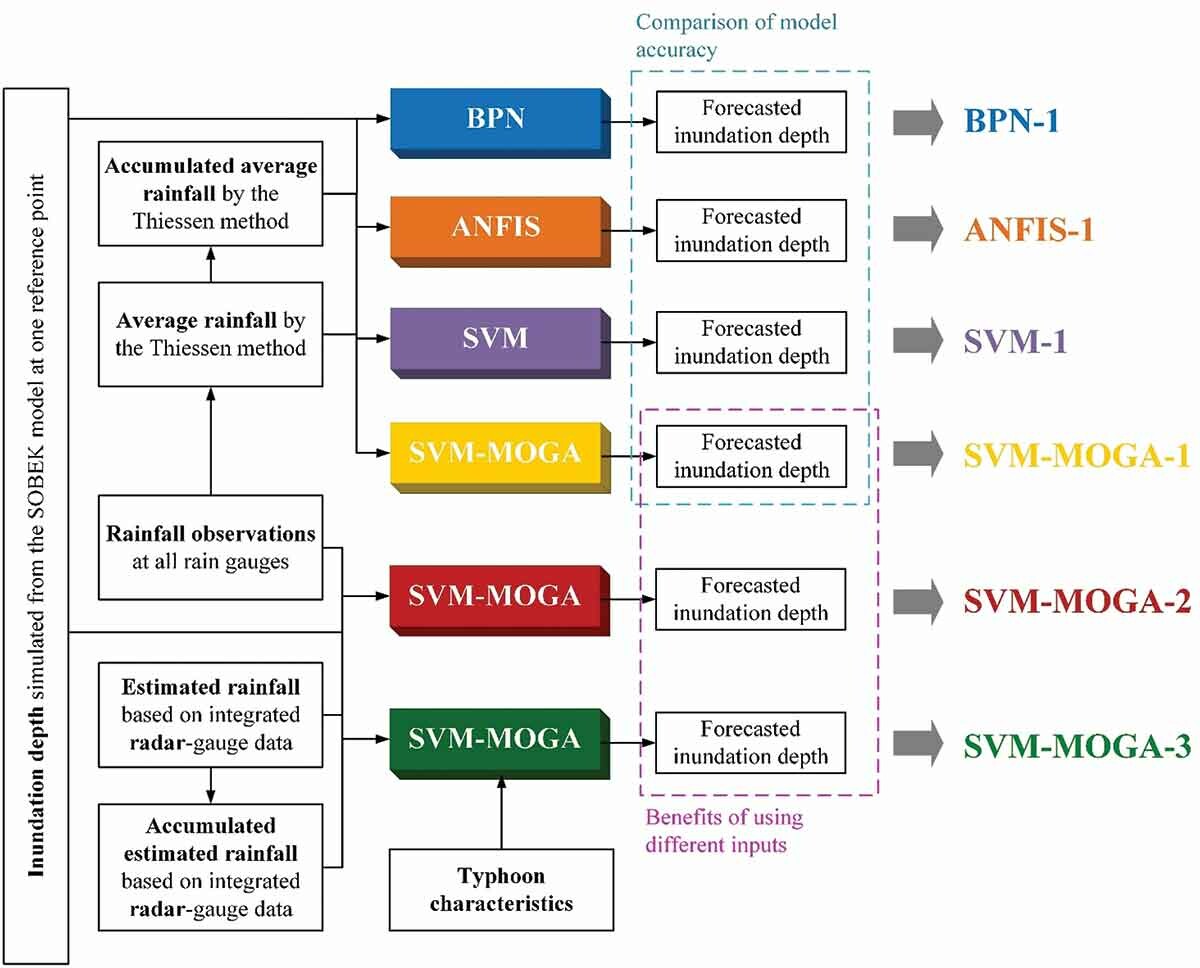 Assessing the effective spatial characteristics of input features through physics-informed machine learning models in inundation forecasting during typhoonsBing-Chen Jhong, Chung-Yi Lin, You-Da Jhong, and 3 more authorsHydrological Sciences Journal, Jul 2022
Assessing the effective spatial characteristics of input features through physics-informed machine learning models in inundation forecasting during typhoonsBing-Chen Jhong, Chung-Yi Lin, You-Da Jhong, and 3 more authorsHydrological Sciences Journal, Jul 2022This study aimed to assess the effective spatial characteristics of input features by using physics-informed, machine learning (ML)-based inundation forecasting models. To achieve this aim, inundation depth data were simulated using a numerical hydrodynamic model to obtain training and testing data for these ML-based models. Effective spatial information was identified using a back-propagation neural network, an adaptive neuro-fuzzy inference system, support vector machine, and a hybrid model combining support vector machine and a multi-objective genetic algorithm. The conventional average rainfall determined using the Thiessen polygon method, raingauge observations, radar-based rainfall data, and typhoon characteristics were used as the inputs of the aforementioned ML models. These models were applied in inundation forecasting for Yilan County, Taiwan, and the hybrid model had the best forecasting performance. The results show that the hybrid model with crucial features and appropriate lag lengths gave the best performance.
2019
-
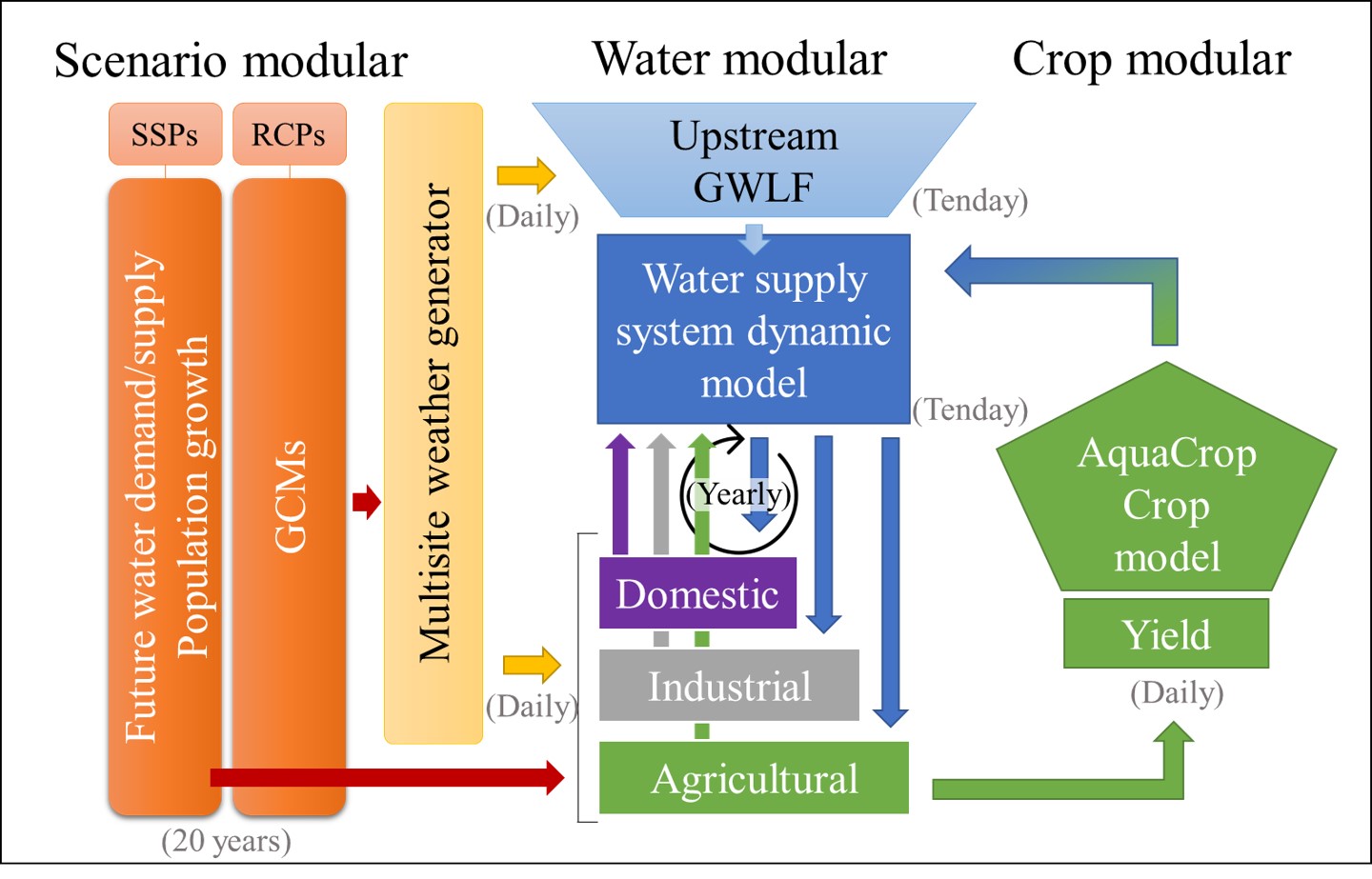 發展氣候, 水資源和糧食跨領域整合模式與結合氣候智慧調適演算法之應用-以桃園為例林宗毅國立臺灣大學生物環境系統工程學系學位論文, Feb 2019Publisher: 國立臺灣大學
發展氣候, 水資源和糧食跨領域整合模式與結合氣候智慧調適演算法之應用-以桃園為例林宗毅國立臺灣大學生物環境系統工程學系學位論文, Feb 2019Publisher: 國立臺灣大學Climate adaptation and risk assessment have become a significant issue. However, a framework for interdisciplinary collaboration and quantitative adaptation assessment has not been well developed. Therefore, this study proposes a standard climate adaptation risk assessment framework. To demonstrate the proposed framework, the Agriculture and Hydrology Integrated Assessment Model (AgriHydro) is developed and operates with Climate Smart Adaptation Algorithm (CSAA) as a tool. AgriHydro consists of four sub-models, which are (1) Multi-Site Weather Generator (MultiSiteWthGen), (2) the hydrological model of Generalized Watershed Loading Function (GWLF), (3) a system dynamic model for the Shimen reservoir water distribution system and (4) AquaCrop crop model. The AgriHydro and CSAA is applied to Taoyaun area in Taiwan. In the first step of CSAA, Risk Template is adopted to factorize risk components among water and agriculture disciplines. In the second and third steps, future trend of risks is simulated by AgriHydro. During the fourth step, adaptation options of substituting soybean for rice are tested. Consequently, synergies and trade-offs between SI and YRR were quantitatively displayed. In the short-term future, substitution in 2nd growing period revealed 2.5 times more efficient in reducing Shortage Index (SI) than in 1st growing period while it slightly increased Yield Reduction Ratio (YRR). However, the yield reduction risk caused by climate change was lower than the difference of actual yield between 1st and 2nd growing periods. Therefore, according to the result, the study suggests altering rice to soybean in 2nd growing period. This conclusion is parallel to the current agriculture policy promoted by the government. Overall, the Taoyuan case study successfully indicates our proposed framework is valuable in interdisciplinary climate adaptation assessment.
-
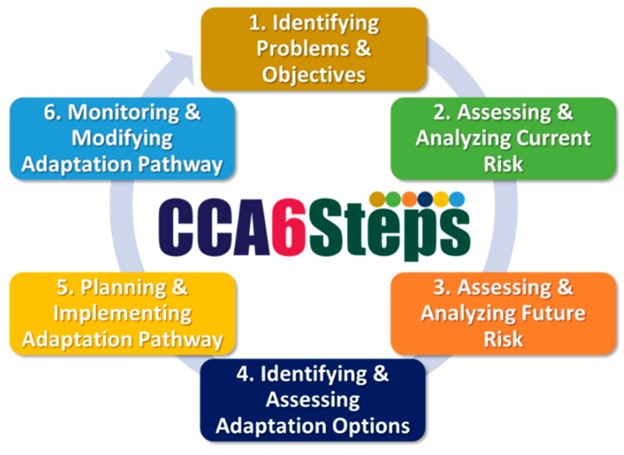 Development of a novel climate adaptation algorithm for climate risk assessmentChing-Pin Tung, Jung-Hsuan Tsao, Yu-Chuan Tien, and 2 more authorsWater, Mar 2019
Development of a novel climate adaptation algorithm for climate risk assessmentChing-Pin Tung, Jung-Hsuan Tsao, Yu-Chuan Tien, and 2 more authorsWater, Mar 2019To comprehensively assess the climate risk originating from climate change, this study aims at developing a novel climate adaptation algorithm, representing not only on the basis of Climate Change Adaptation Six Steps (CCA6Steps), but also innovations in climate risk template. The climate risk template is proposed as a climate risk analysis tool based on the procedure of CCA6Steps, including the identification of problems and objectives, the analysis of current and future risks, and the assessment of adaptation options, to identify the relationship between the climate risk components, including hazard, exposure, and vulnerability. An application is implemented to demonstrate the advantages of the proposed algorithm in this study. The results show that the problems and objectives which concern the governance level and stakeholders can be clearly identified by the proposed algorithm. The relationship between climate-related hazards, exposure, and vulnerability of the protected target can also be precisely investigated. Furthermore, the climate adaptation strategies able to mitigate the impact of hazards on the protected target are further discussed in this study. In summary, the proposed climate adaptation algorithm is expected to provide a standard operating procedure and be a useful tool to support climate risk assessment.